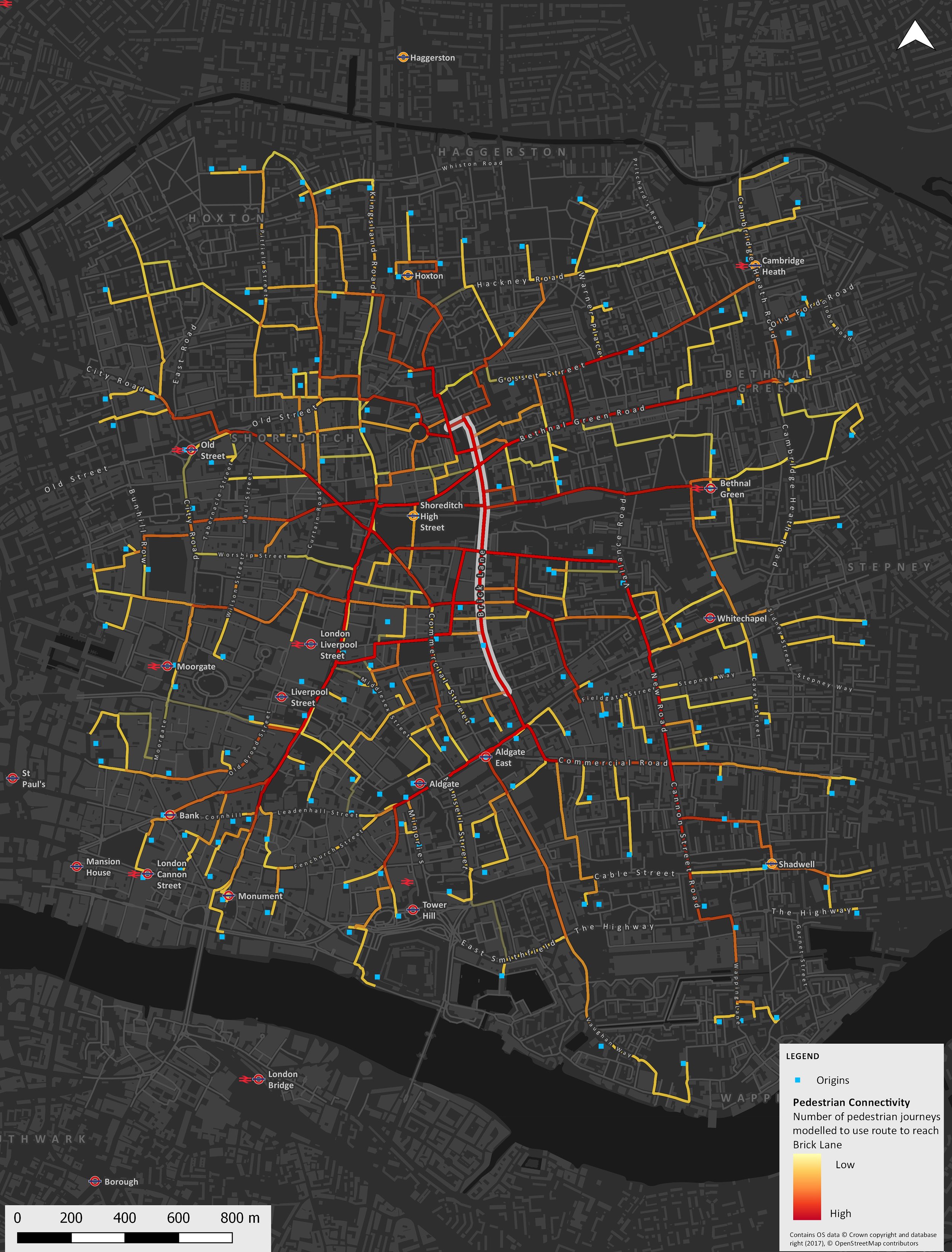Brick Lane
Wayfinding and placemaking strategy to improve the public realm and increase retail patronage.
The famous row, known the world over as the heart of the Bengali community in London, wasn't capitalizing on its full potential as a contemporary and vibrant destination.
Movement patterns generated by key local attractors (Spitalfields Market, the Truman Brewery, Petticoat Lane Market) only related to a short section of the street, and the lack of connectivity to the rest of the area disadvantaged businesses and residents.
Steer developed a high-level wayfinding strategy for Brick Lane to capture and spread the footfall along the entire street as well as turn Brick Lane into a key pedestrian north-south route, linking all the attractions in the area and reinforcing the street's competitiveness.
Steer also identified a wide range of characterful, creative, and distinctive interventions to increase footfall and aid discovery and exploration including improvements to building facades, the development of a cultural trial through to larger scale projects including the design of a pocket park behind the Whitechapel Gallery.
The ambition is that this high-level strategy and the identified interventions should form part of a more robust strategy and scheme for wayfinding within the wider borough. Interventions focus on wayfinding but also consider other opportunities for public art and public realm improvement to support the area's legibility, connectivity and overall quality.
Client: London Borough of Tower Hamlets







